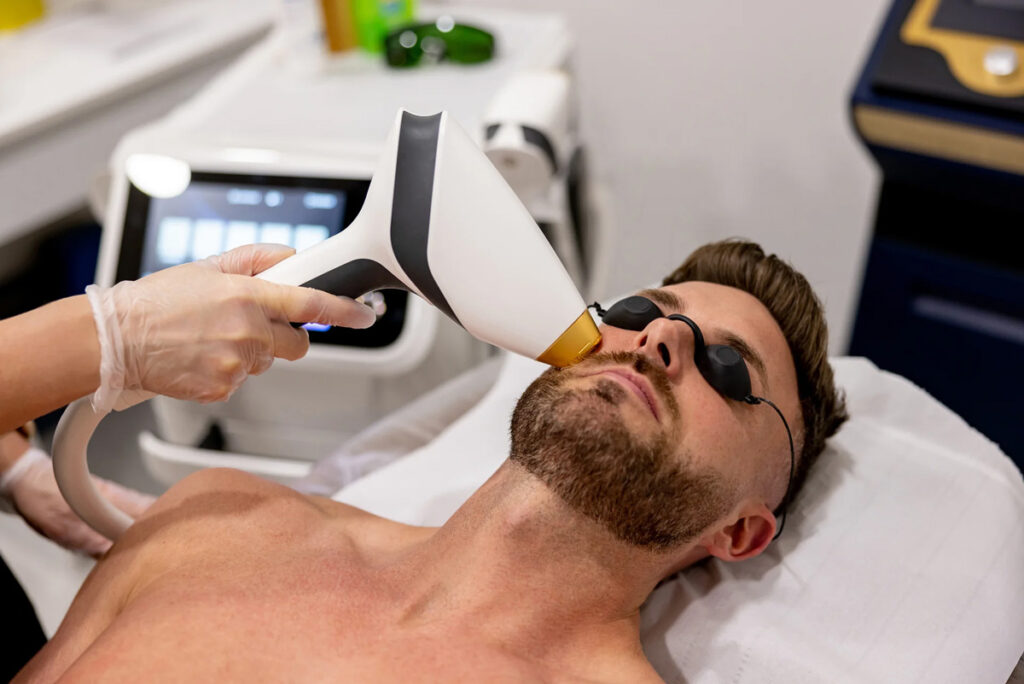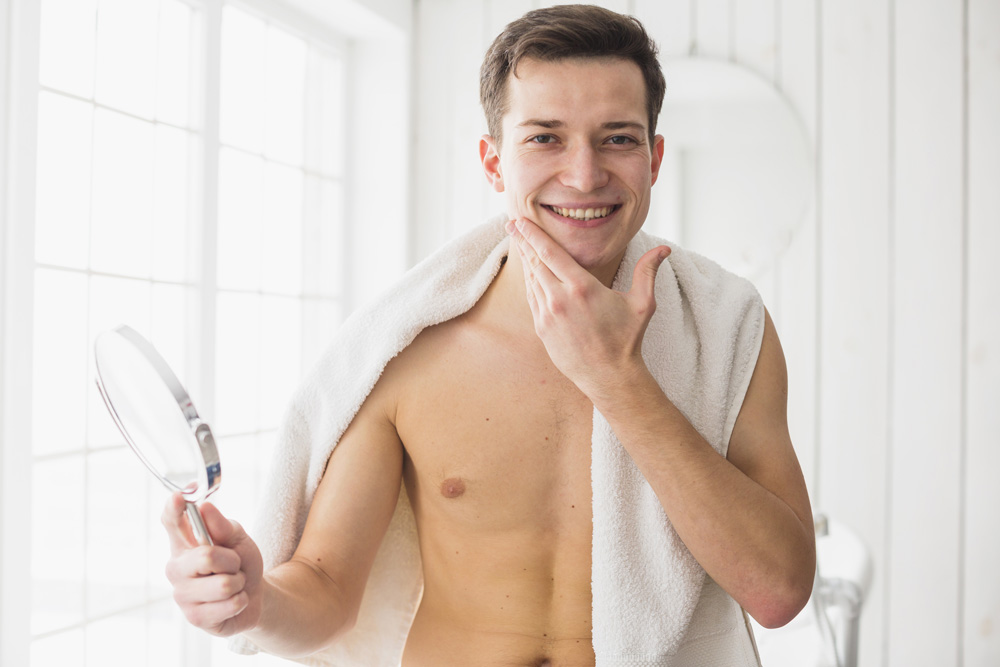Can You Shave After Laser Hair Removal?

At Perizia Aesthetics, we know that many of our clients in Jupiter, Florida ask the same question: “Can I shave after laser hair removal?” It’s one of the most common concerns when starting treatment.
The short answer is yes—but timing and technique matter. Shaving too soon can irritate sensitive skin, while waiting the right amount of time keeps you comfortable and helps you get the best possible results.
In this guide, we’ll explain when it’s safe to shave, why shaving is actually the preferred method of hair removal between laser sessions, and how to care for your skin afterward. If you’re considering treatment, explore our laser hair removal services or call us today at 561-318-7895 to schedule a consultation.
Understanding Laser Hair Removal
Laser hair removal works by delivering concentrated light energy into the hair follicle. That energy damages the follicle so that future growth is significantly reduced. The laser isn’t targeting the hair above the skin’s surface—it’s focusing beneath the skin where the follicle lives.
Because of this, shaving is the safest way to maintain smooth skin between sessions. Shaving trims hair at the surface but leaves the follicle intact, allowing the laser to keep doing its work. Other methods such as waxing or plucking remove the follicle entirely, which interrupts the process and reduces effectiveness.
For the best results, most dermatology resources—including the Mayo Clinic and the American Academy of Dermatology—recommend shaving the day before your session.
Shaving After Laser Hair Removal: The Safe Timeline
So, how soon after treatment can you shave?
Clinical guidance generally advises waiting 24 to 48 hours, or until redness and swelling have resolved. The American Academy of Dermatology notes that mild redness or swelling may last up to three days. During this period, your skin is more sensitive and prone to irritation.
Once the skin feels calm—no longer tender, red, or swollen—it’s safe to shave. For many people, this is within a day or two. In some cases, especially in Florida’s sunny climate where UV exposure is higher, it may be best to give your skin extra healing time.
Shaving over inflamed skin can cause discomfort, small cuts, or ingrown hairs. By waiting until your skin is fully settled, you protect yourself from unnecessary irritation and help your laser results develop smoothly.

Why Shaving Is Preferred Between Sessions
Shaving isn’t just allowed—it’s the recommended method of hair removal between sessions. According to the NHS Laser Centre, you should avoid waxing, plucking, threading, or using depilatory creams because these methods remove the hair follicle, the very target that the laser needs to destroy.
Instead, shaving keeps the follicle intact while giving you the smooth surface you want. This makes shaving a perfect partner to the laser process: it maintains comfort and appearance while ensuring each session remains effective.
At Perizia Aesthetics, we advise our patients on when and how to shave so they can keep their skin looking great without compromising results. Our team personalizes every aftercare plan to ensure safety and long-term success.
Shaving Technique to Protect Your Skin
When the time is right to shave, technique matters. Here are dermatologist-recommended steps to minimize irritation:
- Use a clean, sharp razor. Dull blades can tug at the skin and increase the chance of razor bumps.
- Shave with the grain. Always follow the direction of hair growth to reduce ingrown hairs.
- Apply fragrance-free shaving cream or gel. Harsh products can irritate freshly treated skin.
- Moisturize afterward. Use a gentle, fragrance-free lotion to restore hydration.
The American Academy of Dermatology’s shaving tips emphasize these practices to prevent irritation, razor bumps, and ingrown hairs. Following them helps your skin remain smooth and healthy while your laser treatments do the deeper work.
Additional Aftercare That Affects Shaving
Shaving is just one piece of the overall aftercare puzzle. How you care for your skin after laser hair removal directly impacts comfort, healing, and long-term results.
Cooling and Comfort
Mild redness, swelling, or a sunburn-like sensation is common for a few hours after treatment. The American Academy of Dermatology notes these effects typically subside within one to three days. Applying cool compresses can ease discomfort during this period.
Avoid Heat and Friction
Until your skin has settled, it’s best to skip hot tubs, saunas, or intense workouts that make you sweat excessively. These activities may worsen irritation.
Sun Protection in Florida’s Climate
Sun exposure is one of the biggest concerns after laser hair removal. The Mayo Clinic and the American Society for Dermatologic Surgery both stress avoiding tanning beds and direct sun exposure. In a sunny location like Jupiter, daily use of broad-spectrum SPF 30+ sunscreen and protective clothing is essential. Not only does this prevent burns, but it also reduces the risk of pigmentation changes.
By following these steps, you’re creating the best conditions for comfortable shaving and optimal laser results.

Common Concerns and Myths
Myth: Shaving Makes Hair Grow Thicker
This is one of the most persistent misconceptions. Shaving only cuts the hair shaft at the surface—it doesn’t affect the follicle or stimulate growth. The appearance of “thicker” hair is simply due to blunt tips as hair regrows.
Concern: Will Shaving Irritate the Skin?
Yes, shaving can cause irritation if done too soon after a session. That’s why experts recommend waiting until redness or swelling subsides—typically 24 to 48 hours. Using proper technique and gentle products helps avoid problems.
Concern: Can I Use Wax, Threading, or Depilatory Creams Instead?
No. As noted by NHS patient leaflets, these methods remove or damage the follicle, reducing the effectiveness of laser treatments. Shaving remains the only safe method between sessions.
Why Choose Perizia Aesthetics for Laser Hair Removal in Jupiter
At Perizia Aesthetics, we understand that every client’s skin is unique. That’s why our specialists provide customized aftercare plans—including when and how to shave—to ensure maximum comfort and effectiveness.
Here’s what sets us apart:
- Personalized care: Every treatment plan includes guidance on hair removal and aftercare specific to your skin type.
- Expertise you can trust: Our experienced team stays aligned with best practices from sources like the American Academy of Dermatology.
- Convenient local service: As a trusted medspa in Jupiter, we’re proud to serve clients across Palm Beach County who want smooth, lasting results.
If you’re ready to learn more, schedule your consultation by visiting our contact page or calling 561-318-7895.
Conclusion
So, can you shave after laser hair removal? Absolutely—once the skin has calmed, typically within 24 to 48 hours. Shaving is not only safe but also the preferred method of hair management between treatments. By waiting until redness and swelling subside, using the right technique, and following key aftercare steps like sun protection, you’ll keep your skin comfortable and your results on track.
At Perizia Aesthetics, we guide you every step of the way so you can achieve smoother skin with confidence. To get started, explore our laser hair removal services and take the first step toward a more confident you.





